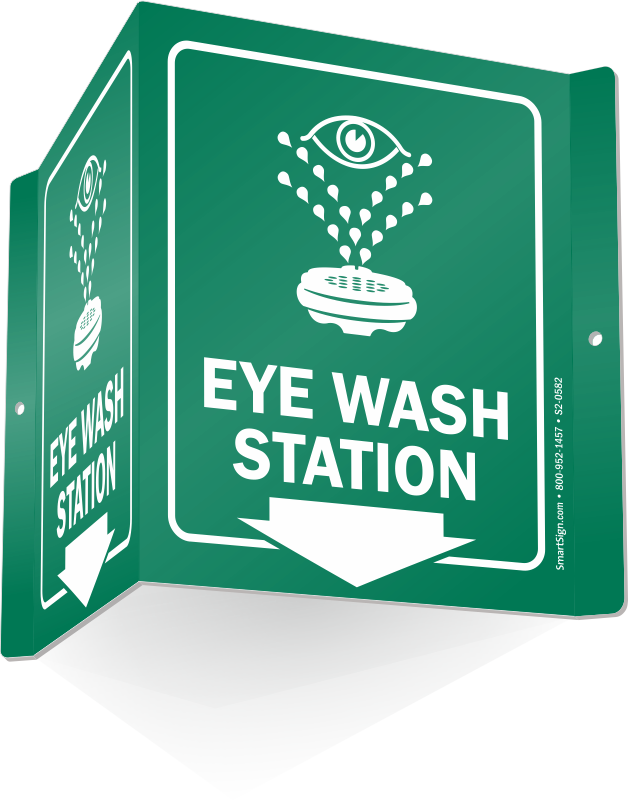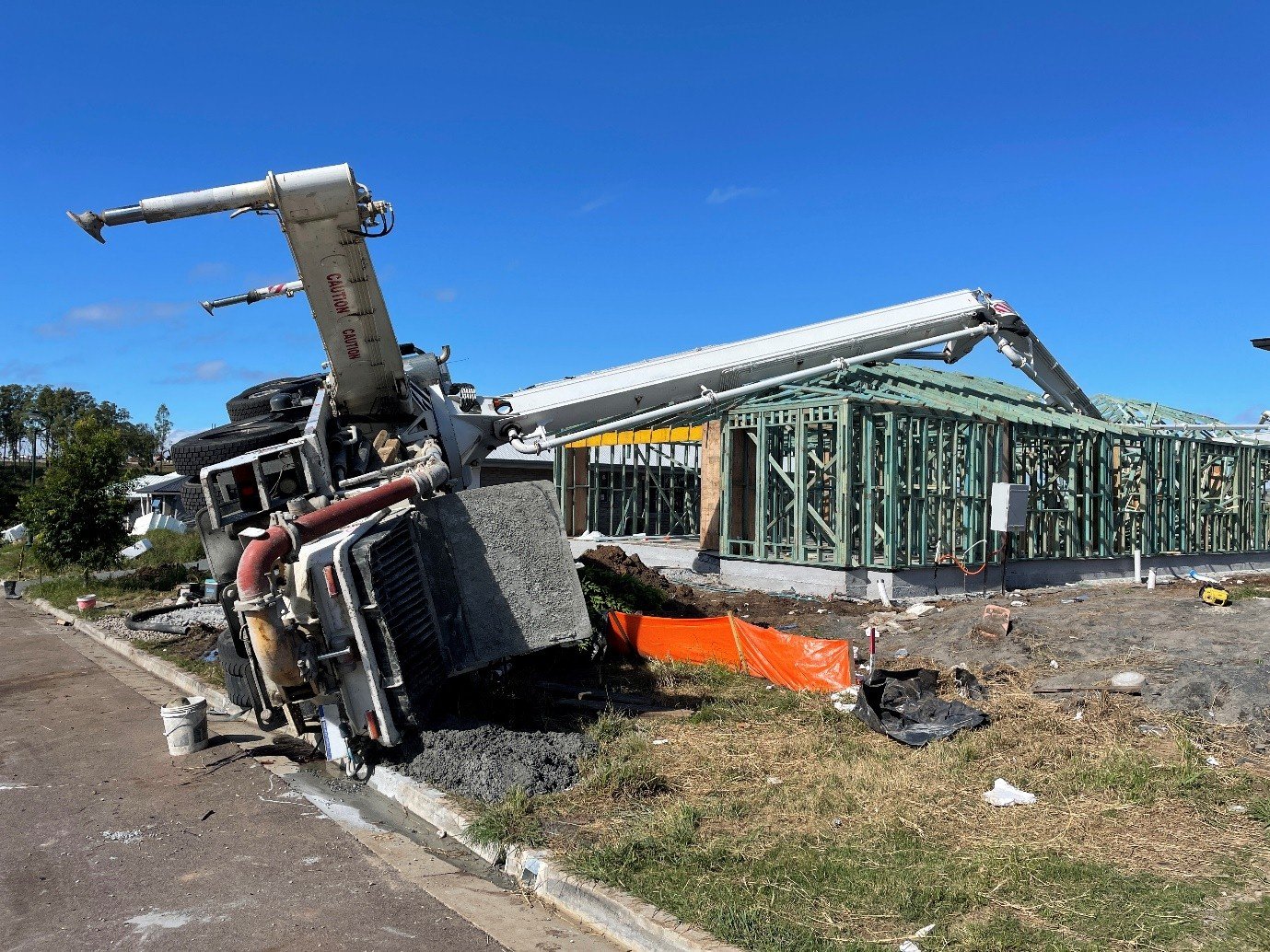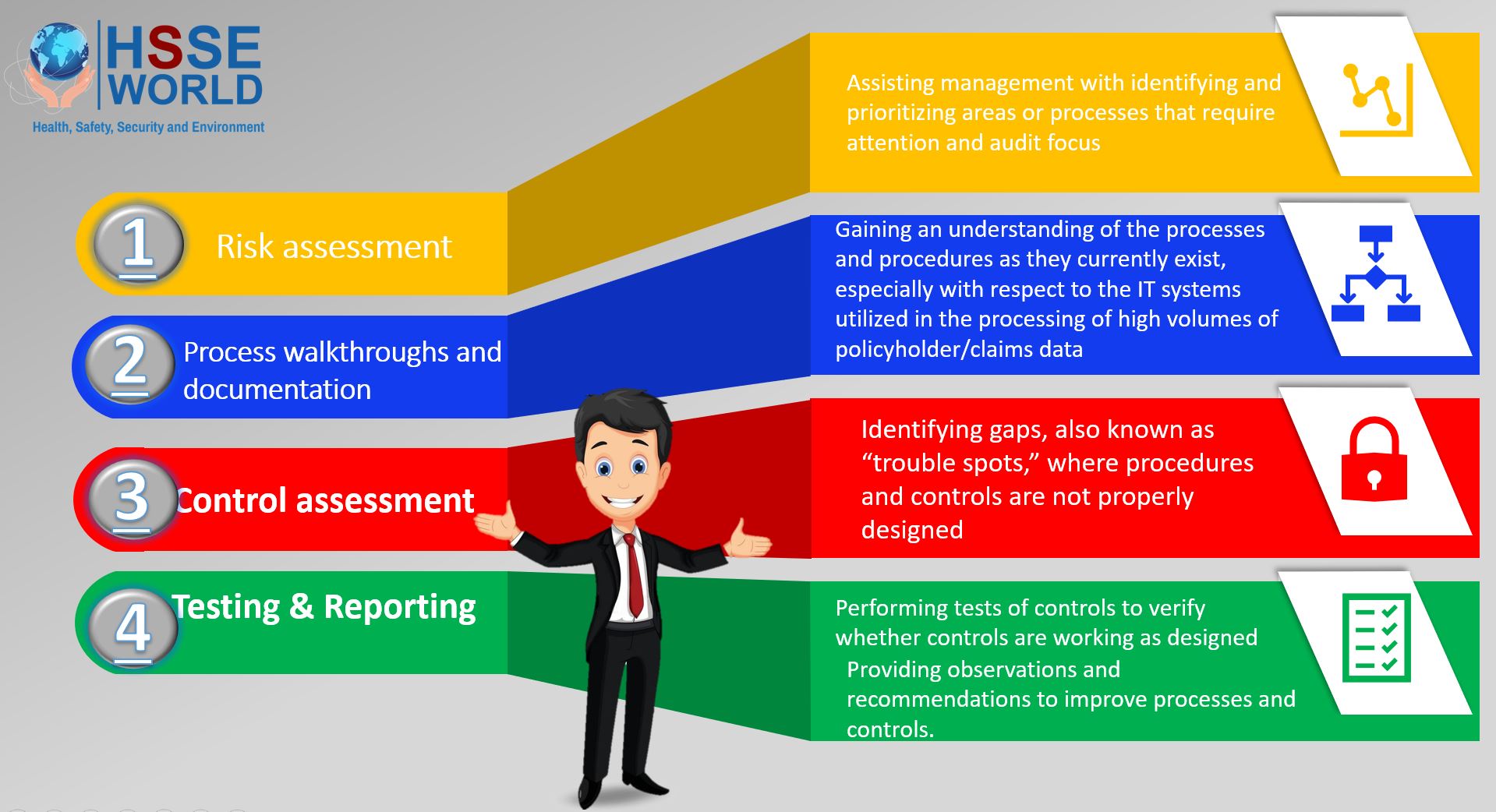In today’s fast-paced working environments, prioritizing employee health and safety has become paramount. One crucial aspect of workplace safety is the implementation of an effective Eye Wash Safety Program. With the potential for eye injuries in various industries, it is imperative to have proper protocols and equipment in place to ensure optimal protection and preparedness.

General
Luckily, 90 percent of all workplace eye injuries are preventable with the use of proper safety eyewear. Despite the good news, the Bureau of Labor Statistics (BLS) reports that eye injuries in the workplace cost over $300 million per year in lost production time, medical expenses, and workers’ compensation costs. Nearly one million Americans have already lost some degree of sight to an eye injury.
The best way to prevent injury to the eye is to always wear the appropriate eye protection. Surprisingly, the BLS reports that approximately three out of every five workers injured were either not wearing eye protection at the time of the accident or wearing the wrong kind of eye protection for the job. To be effective, eyewear must fit properly and be designed to effectively protect workers while they work. It is estimated that over 90 percent of eye injuries are preventable with the use of proper safety eyewear. The Occupational Safety and Health Administration (OSHA) has standards that require employers to provide their workers with the appropriate eye protection.
The proper eye wash and eye wash facilities are imperative for any environment that exposes people to corrosive materials that can cause injury. OSHA, un- der 29 Code of Federal Regulations (CFR) 1910.151, states that proper facilities for quick drenching or flushing of the eyes and body must be immediately available to people who are exposed to those hazardous materials. The American National Standards Institute (ANSI) has elaborated on OSHA’s regulations and put forth further guidelines for safety in the workplace.
Some ANSI Considerations Regarding Eye Wash Units
The ANSI Z358.1-2004 standard implemented additions to the original 1981 standard. The additions established detailed minimum performance requirements, testing, installation, maintenance, and training specifications for equipment systems used for emergency treatment of the eyes or body of a person who has been exposed to injurious material. The 1981 standard included general considerations involving eye wash stations such as location, operation, flow time, and water temperature. The station must be located in an area that is immediately accessible to people who are exposed to dangerous materials. For some materials, locating an eye wash station within 10 seconds of walking time is enough. Still, for more dangerous materials, it is important to locate the station immediately adjacent to the hazard.
A one-handed, easy-to-access operation is also imperative. A convenient pull-down lever is a common feature on many eye wash stations and offers an acceptable ease of use. Once activated, water or a pH-balanced cleansing solution must flow freely for
at least fifteen minutes. Bottles of eyewash, contained in a cabinet or behind a barrier of any kind, are unacceptable under some conditions and may be cited as violations.
Lastly, the water must be at a temperature that is comfortable and will not damage the eyes. In most cases, this means that tepid water, or water that is “lukewarm” will suffice. In some cases, however, warm water may compound a chemical reaction, so please consult with a professional to discuss the optimum water temperature for any specific application. In instances of plumbed units, or units that are connected to a building’s plumbing network, disconnecting the hot water pipe from an eye wash station may be necessary.
Eye Wash Station
Although it may be a good idea in any workplace, the presence of an eye wash station is especially important in an environment where hazardous chemicals are in use. OSHA regulations state that an eyewash station must be installed in an accessible place wherever corrosive materials are present. Environments where formaldehyde is used in a concentration greater than 0.1 percent must also have eye wash stations in easily accessible locations as well.
A Few Points to Consider About Eye Wash Stations:
There are several points, mandated by OSHA, to consider when preparing to install eye wash stations. Installing the station in an accessible location is very important. Any location that is upstairs, around corners, through closed doors, or in any other way physically separated from the work environment is considered an inadequate location for an eye wash station.

The ANSI standard provides that emergency equipment be installed within 10 seconds of walking time from the location of the hazard.
One-handed activation of water flow, commonly provided in the form of a pull-down lever, is also very important. Many eye wash stations are operated with a lever that, once activated, does not require the application of any other force to stay on. For some applications, a pull-down lever that activates a pair of water nozzles and provides a combination of eyewash and face wash is adequate. For other applications, a station that includes a drench shower may be more appropriate.
For any application, and any degree of danger, an uninterrupted 15-minute flow time is necessary. Once activated, it is important that the eye wash station operates for at least 15 minutes, and provides at least three gallons (11.4 liters) of tepid water per minute. Some eye wash stations may substitute a pH-balanced saline solution for tap water because tap water can be damaging to the eyes.
Emergency Eye Wash
There are two main types of emergency eye wash units. Depending on the model and make, both types can conform to OSHA and ANSI standards, and both can be successfully installed in almost any work environment. The main difference between the two types of emergency eye wash units is that one receives water from a remote source, and the other features a self-contained tank of water or other fluid.
Plumbed eye wash stations are stations that are permanently connected to a source of potable (drinkable) water. Usually, this means they are connected to a building’s plumbing supply. To ensure that water flows freely and cleanly from a plumbed station, it is recommended that the station be tested at least once a week. Gravity-fed eye wash stations contain their own water or flush fluid and must be refilled after every use. It is important to maintain the unit according to instructions from the manufacturer, which may include periodically checking the level, cleanliness, and quality of the water in the tank. Both gravity-fed and plumbed eye wash stations must be able to maintain a flow of three gallons per minute for 15 minutes. ( Read more about Eye wash and Emergency shower safety )
Other Varieties of Emergency Eye Wash Stations
Other common types of eye wash stations include the popular eye and face wash unit, and drench hoses. Eye/face wash units produce water from two or more nozzles that are positioned to directly affect both eyes and the face of the user. Drench hoses, like showers, are connected to a water supply and are used to clean and flush the eyes, face, and the body. Both eye/face wash stations and drench hoses must emit at least three gallons of water every minute for at least 15 minutes.
Emergency Eye Wash Station
As with any safety measure, the details surrounding the proper installation, maintenance, and type of emergency eye wash stations that are acceptable to OSHA are numerous and can be confusing. Regardless of OHSA’s concerns, though, there are certain considerations to take into account when you’re trying to plan a work environment that is safe and reliable for everyone involved. Ensuring a safe, healthy environment is not only imperative but can also be easy, by using a little common sense.
First, emergency eye wash stations should be located in easy-to-reach places. The recommended height for showers is around seven or eight feet off of the ground, and sinks or face washes should be around 3 feet from the ground. Also, facilities should be located along an unobstructed path and as close as possible to the hazard.
Second, activation of emergency eye wash stations should be as easy as possible. With one quick tug, most eye wash stations will activate and stay activated for at least fifteen minutes. With emergency showers, an easily reachable level for the actuator handle is around 5 feet off of the ground. For drench hose units or eyewashes, the actuator is usually built into the unit, and can easily be installed facing outward for the most immediate use. ( Read: A guide to eye wash and emergency shower station)

Portable Eye Wash Station
For many applications, it may be more practical to utilize a portable eye wash station than a plumbed station. In situations where there isn’t the luxury of plumbing or a reliable water source, portable eye wash stations are the perfect solution, combining a safe environment with compliance with health standards. Portable stations also are great for safety and rescue vehicles to take to accident scenes.
The Two Main Varieties of Portable Eye Wash Stations
Portable eye wash stations come in two main types. One is a gravity-fed type, where water is pumped from a storage tank through drench nozzles and onto the eyes and face. Gravity-fed units are easily mounted on walls, or temporarily installed on level surfaces such as makeshift tabletops. Most gravity-fed eye wash stations emit the standard three gallons per minute and are capable of running uninterrupted for at least 15 minutes.
The other main type of portable eye wash station consists of a pressurized tank connected to standard drench nozzles or a drench hose. These units are extremely portable and very useful for immediate operation in any environment. However, they often do not produce a shower strong enough or long enough to meet ANSI standards, and as such, should not be used as a primary emergency eye wash station.
Eye wash solution is also available in bottles, which are small enough to fit inside a pocket. These personal eyewash products, while practical for some applications, may not be suitable for more extreme use.
People who are regularly exposed to hazardous materials should also always be trained in the proper use of all safety products, including eye wash stations, face wash stations, and drench showers.
Emergency Eyewash & Shower Equipment
Flushing Fluid any potable (drinking) water, preserved water, preserved buffered saline solution or other medically acceptable solutions.
Flushing Time – ANSI Z358.1-2004 says that the affected body part must be flushed immediately and thoroughly for at least 15 minutes using a large supply of clean fluid under low pressure. Longer times, such as 60 minutes for penetrating corrosive materials is recommended by other sources.

Emergency Showers
- Be able to deliver a pattern of water with a diameter of at least 20 inches at 60 inches.
- The shower head is between 82 to 96 inches from the floor.
- The minimum volume of spray is 20 gallons/minute for a minimum time of 15 minutes.
- Shower activation time must be one second or less and must not require continuous engagement of controls for continued operation
- Actuating valve or lever should not be more than 69 inches from the floor.
Eyewash Stations

- Be able to deliver fluid to both eyes simultaneously at a volume of not less than three gallons/minute for 15 minutes.
- The pressure of fluid should not be high enough to cause eye injury.
- Mounted 33 to 45 inches from the floor.
- Mounted a minimum of six inches away from the wall or obstructions.
- Activation time of one second or less and the unit should remain in operation without the need for continued activation.
- The acting valve or lever should be in an easily located area and be highly visible.
- Must have nozzle caps to prevent foreign matter from accumulating in the nozzle area.
- Nozzle caps should automatically separate from the nozzles when the unit is activated.
Signs & Lighting – highly visible signs must be posted in the area of emergency eyewash and shower stations. The location should be well lit.
Location of Equipment – ANSI requires that a person must be able to reach the equipment within 10 seconds after chemical exposure. Where a highly corrosive chemical is used, an emergency shower and eyewash station should be as close as 10-20 ft from the hazard.
- Located as close to the hazard as possible.
- Not separated by a partition from the hazardous work area
- The unobstructed path from the hazard to the eyewash or shower.
- Located where easily visible.
- Located on the same floor as the hazard.
- Near the emergency exit emergency response personnel can easily reach an exposed employee.
- Located in a non-hazardous area to prevent further contamination.
- Drainage system to remove excess water.
- Not located near electrical equipment.
- Freeze protection for outdoor units.
Water temperature – The 2004 ANSI standard states that water be “tepid” but does not give a specific temperature range. In general, water temperatures should be in the range of about 80 °- 95°F. Install temperature control valves. Consider that the initial temperature of the flushing water will be the ambient temperature of the piping system. Recirculation systems will keep water temperature at required range.
Other considerations for selection and placement of emergency eyewash & shower stations:
- potentially hazardous substances in the immediate work area;
- the number of people in an area working with hazardous substances;
- isolated workers; and
- quality of the flushing fluid.
Maintenance – The ANSI standard recommends a complete inspection on an annual (yearly) basis. Keep a record of all inspections and maintenance. Inspect & maintain in accordance with manufacturers’ recommendations.
Disposal of Water
The standard does not include any provisions regarding the disposal of waste water. However, designers must give consideration to where waste water will go. In particular, care must be taken that waste water does not create a hazard (i.e. by creating a pool that might freeze or in which someone might slip). After an emergency eye wash or shower has been used the waste water may contain hazardous materials that can- not or should not be introduced into a sanitary system. It may be necessary to connect the drain piping from the unit acid waste disposal system or to a neutralizing tank.
Many new chemical products are introduced into the workplace each year and even with careful planning and safety measures, harmful chemical-exposure accidents occur. Because of the potential for exposure, a list of all hazardous substances should be maintained at each worksite. Material Safety Data Sheets on these substances should be readily available with substance descriptions as well as their location, risks, manufacturer’s precautions, and treatment or antidote measures should there be a harmful exposure.
Emergency wash fixtures must be provided in the workplace if there is a reasonable risk that workers may be exposed to caustic chemicals or other hazardous substances. All workers at risk for exposure should be made aware of the location and purpose of the emergency wash stations and receive regular train- ing on their use. Keep in mind that emergency wash fixtures are not substitutes for personal protective gear like safety eyewear, face shields, and protective clothing.
Some chemicals have react violently when mixed with another substance and may endanger the handler or those in the area. You can counteract a reaction by having emergency wash stations or showers that provide large amounts of continually flowing water to flush the chemical. It is not recommended that neutralizing agents be used on the eyes or skin. Combining certain chemicals can be dangerous and may increase the damaging effects of chemical burns. Disfiguring scar tissue may also develop if the wrong neutralizing agent is accidentally used.
The most effective first step in treating chemical contamination of the eye or skin is immediate flushing or washing with potable water. Therefore, the appropriate selection and placement of emergency wash stations or showers becomes crucial for emergency response situations involving hazardous substances.
Medical experts say that immediate access to an emergency wash station is critical. The chance of full recovery from chemical contamination of the eye is excellent if the victim reaches an eyewash station within 10 to 15 seconds. Panic, pain, and obscured vision will slow response time, so it is important that emergency wash fixtures be highly visible.
The length of time and amount of flushing or washing are key factors in successfully treating the eyes or skin. The minimum amount of time for flushing the eye is 15 minutes, although most medical experts say a full 20 to 30 minutes of flushing time is best. It is important that the water pressure of the eyewash station be closely regulated because tender eye tissue can be easily damaged.

When an eye injury does occur, have an ophthalmologist (eye physician and surgeon), or other medical doctor examine the eye as soon as possible. Although the injury may not look or feel serious, it could still cause serious damage to your eyes. If you have blurred vision, partial loss of vision, double vision, or sharp pains in your eye after an accident, consult an ophthalmologist or go to a hospital emergency room right away. With the help of a trained medical professional, establish first-aid procedures for chemical injuries and then review and update them on a regular schedule.
Read : Eye Injuries Prevention
Conclusion
In conclusion, implementing an effective Eye Wash Safety Program is a crucial step in safeguarding employees’ vision and well-being. By understanding the importance of eye wash safety, adopting the components of a comprehensive program, and regularly training and educating employees, organizations can create a safer work environment and mitigate the risks associated with eye injuries. Investing in eye wash stations and maintaining them in optimal condition demonstrates a commitment to employee safety, ultimately enhancing productivity and fostering a culture of care within the workplace.
Read and download many resources at Safetybagresources




